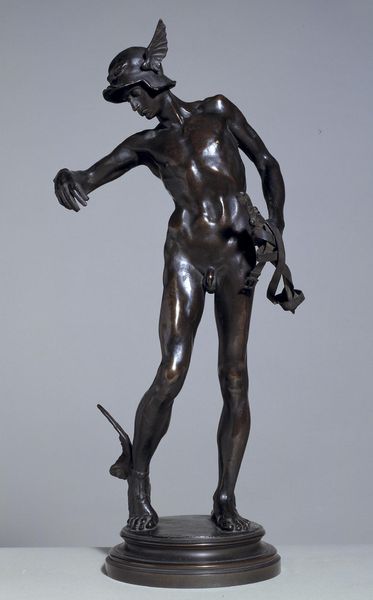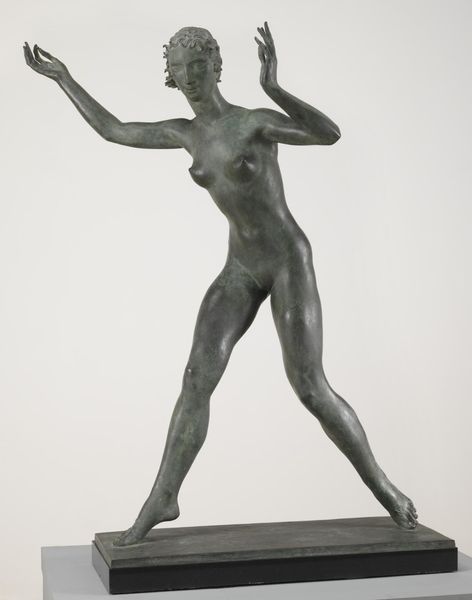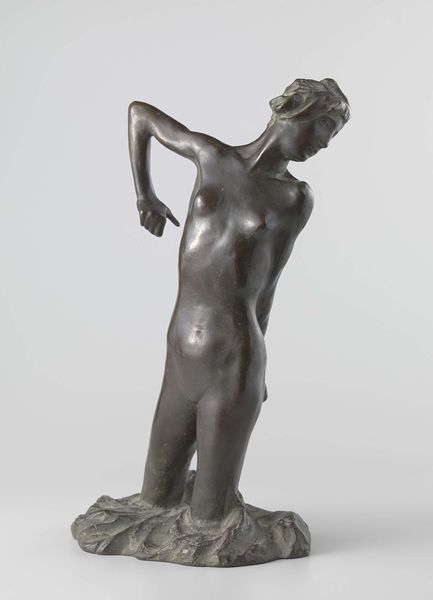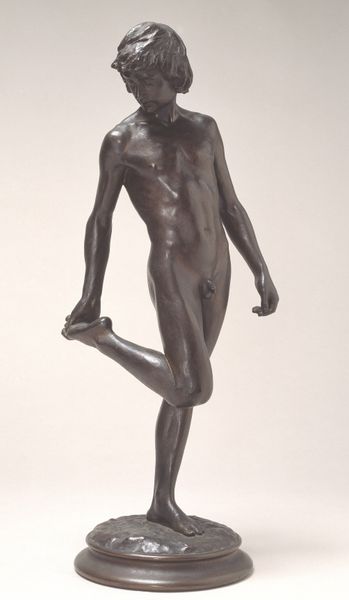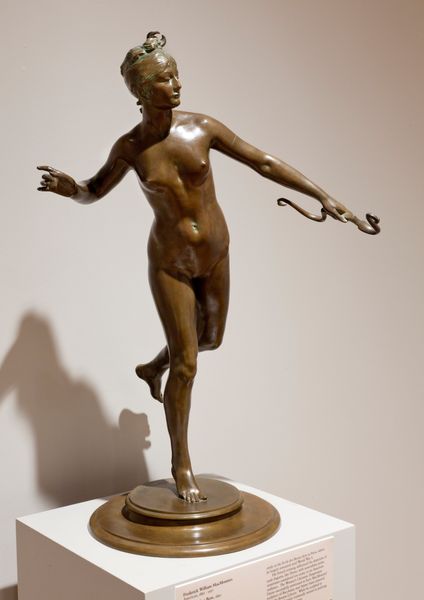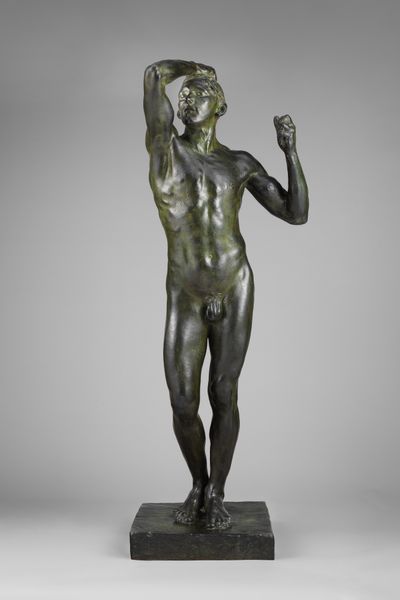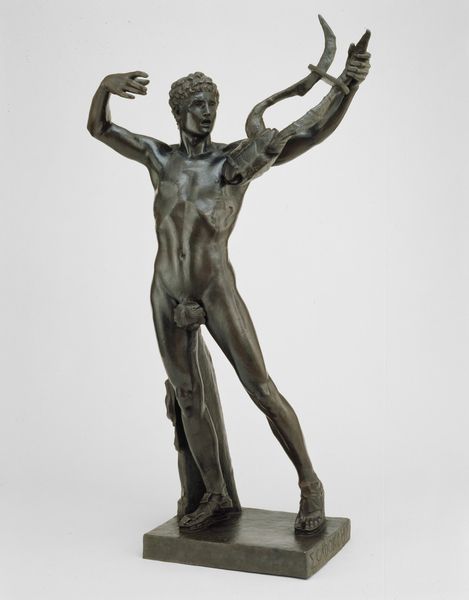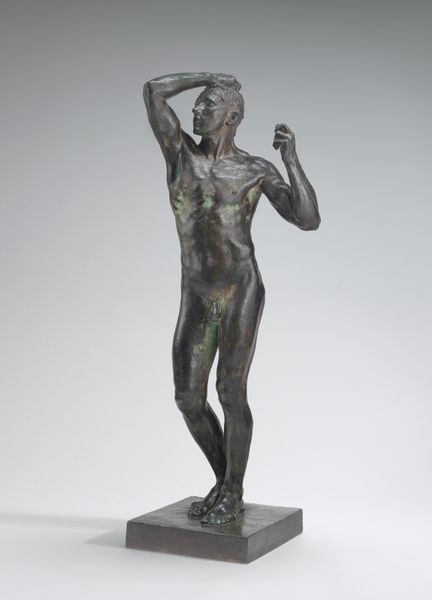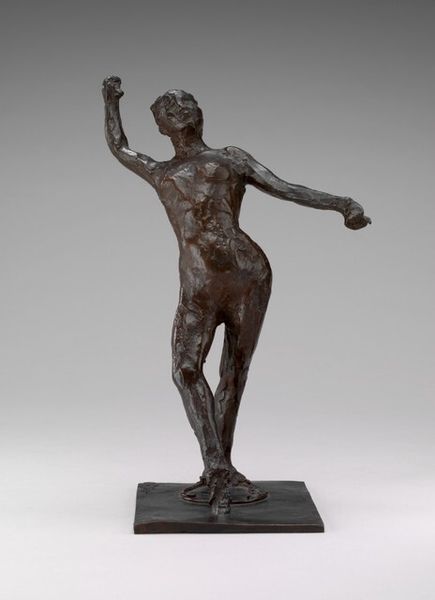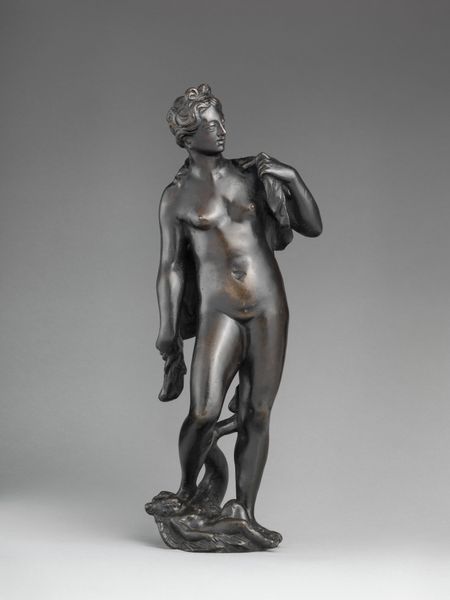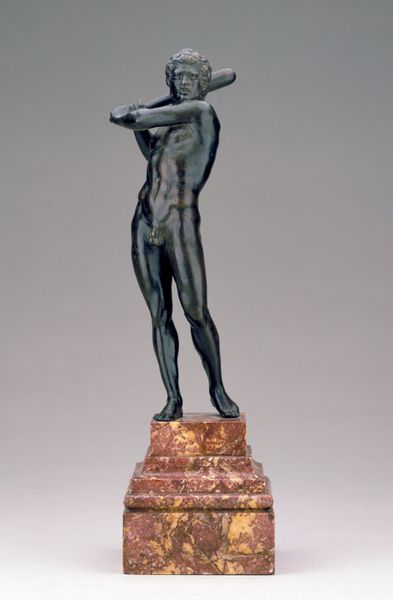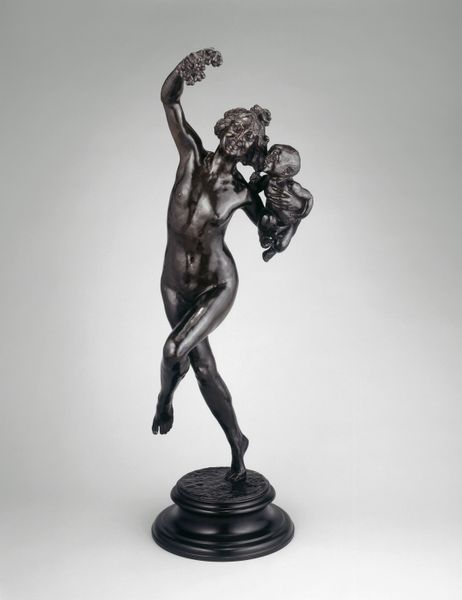
Dimensions: object: 825 x 318 x 381 mm
Copyright: CC-BY-NC-ND 4.0 DEED, Photo: Tate
Editor: Here we have Frederick William Pomeroy's bronze sculpture, Dionysus, currently residing at the Tate. I find it rather charming, even playful. What strikes you about it? Curator: It's fascinating how Pomeroy renders Dionysus, the god of revelry, as a public figure. The statue’s placement within the Tate elevates the once-private, bacchanalian experience to a celebrated cultural artifact. What does that say about Victorian society’s embrace, or perhaps appropriation, of classical themes? Editor: So, it’s less about the god himself and more about how we choose to display him? Curator: Precisely! The institutional context profoundly shapes our understanding and acceptance of the art. Food for thought, indeed!
Comments
Join the conversation
Join millions of artists and users on Artera today and experience the ultimate creative platform.
tate 8 months ago
⋮
F.W.Pomeroy RA was a prominent figure in the major revival of sculpture that took place in England from the 1870s onwards. The New Sculpture, as it was called, was particularly notable for a renewed interest in the techniques of bronze casting, coinciding with a rise in popular taste for Italian Renaissance bronzes. Pomeroy is reported to have 'made his mark' with this sculpture when he showed it as a plaster cast at the Royal Academy in 1890. Dionysus was the ancient Greek god of wine, and Pomeroy shows him as a vibrant youth, toasting us with his upheld rhyton, or drinking horn. Dionysus was associated with nature and the animals, and here he stands on a Renaissance style base with animal feet. Gallery label, August 2004
